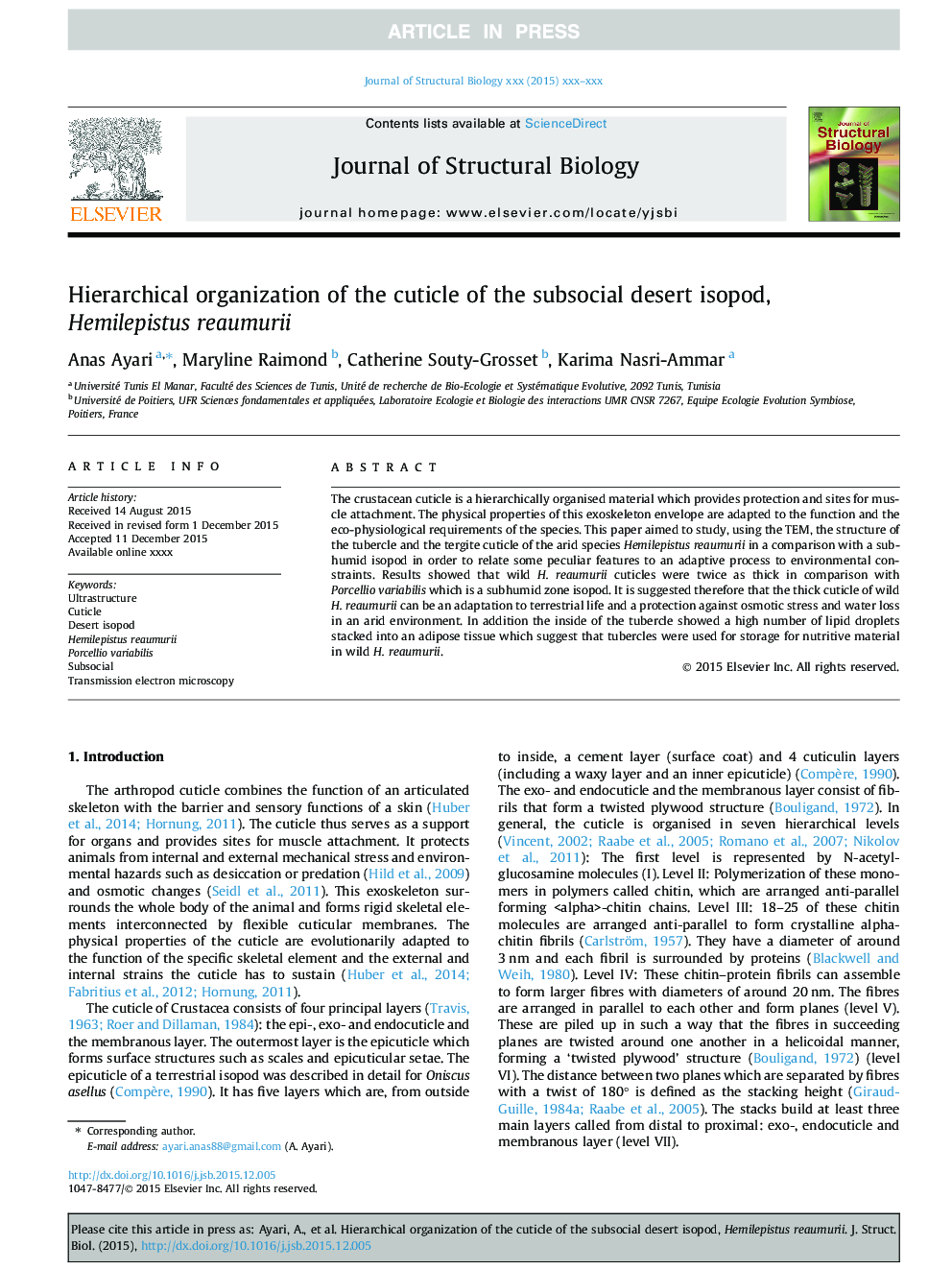| Article ID | Journal | Published Year | Pages | File Type |
|---|---|---|---|---|
| 5913735 | Journal of Structural Biology | 2016 | 9 Pages |
Abstract
The crustacean cuticle is a hierarchically organised material which provides protection and sites for muscle attachment. The physical properties of this exoskeleton envelope are adapted to the function and the eco-physiological requirements of the species. This paper aimed to study, using the TEM, the structure of the tubercle and the tergite cuticle of the arid species Hemilepistus reaumurii in a comparison with a subhumid isopod in order to relate some peculiar features to an adaptive process to environmental constraints. Results showed that wild H. reaumurii cuticles were twice as thick in comparison with Porcellio variabilis which is a subhumid zone isopod. It is suggested therefore that the thick cuticle of wild H. reaumurii can be an adaptation to terrestrial life and a protection against osmotic stress and water loss in an arid environment. In addition the inside of the tubercle showed a high number of lipid droplets stacked into an adipose tissue which suggest that tubercles were used for storage for nutritive material in wild H. reaumurii.
Related Topics
Life Sciences
Biochemistry, Genetics and Molecular Biology
Molecular Biology
Authors
Anas Ayari, Maryline Raimond, Catherine Souty-Grosset, Karima Nasri-Ammar,
